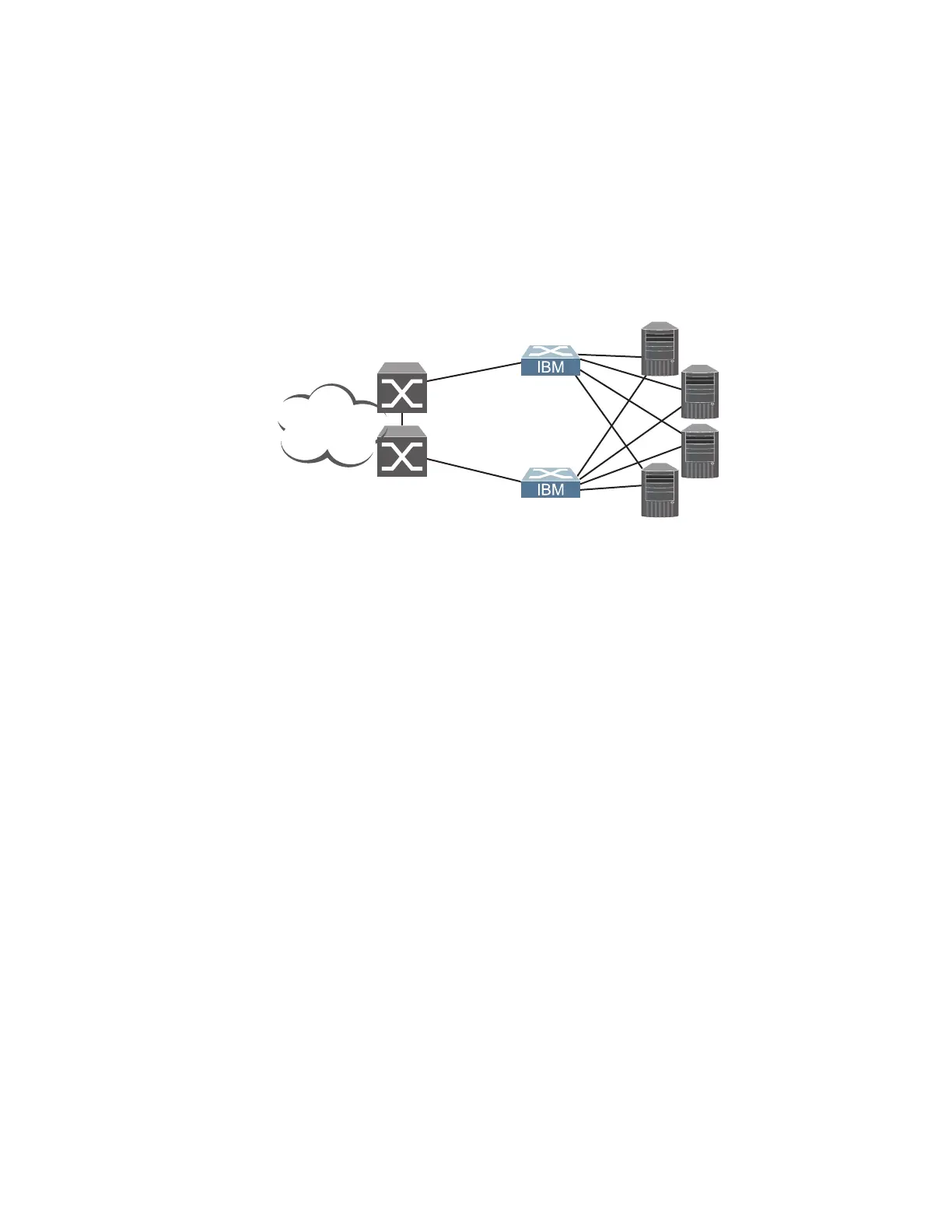© Copyright IBM Corp. 2011 Chapter 25. Virtual Router Redundancy Protocol 301
Active-Active Redundancy
In an active-active configuration, shown in Figure 38, two switches provide
redundancy for each other, with both active at the same time. Each switch
processes traffic on a different subnet. When a failure occurs, the remaining switch
can process traffic on all subnets.
For a configuration example, see “High Availability Configurations” on page 304.
Figure 38. Active-Active Redundancy
Virtual Router Group
The virtual router group ties all virtual routers on the switch together as a single
entity. As members of a group, all virtual routers on the switch (and therefore the
switch itself), are in either a master or standby state.
A VRRP group has the following characteristics:
•
When enabled, all virtual routers behave as one entity, and all group settings
override any individual virtual router settings.
•
All individual virtual routers, once the VRRP group is enabled, assume the
group’s tracking and priority.
•
When one member of a VRRP group fails, the priority of the group decreases,
and the state of the entire switch changes from Master to Standby.
Each VRRP advertisement can include up to 128 addresses. All virtual routers are
advertised within the same packet, conserving processing and buffering resources.
Internet
Internet
Enterprise
Routing Switch
Switch 1
Switch 2
Servers
Active (subnet A and C)
Active (subnet B and D)

